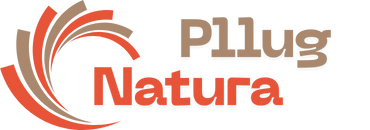Creativity has always been at the heart of human progress. From the first cave paintings to modern-day digital masterpieces, people have used art and expression as a way to communicate, inspire, and connect. Yet in recent decades, the role of technology in shaping creativity has expanded more rapidly than ever before. What once required weeks of effort can now be achieved in hours, and what was once impossible is now part of everyday creative practice.
How Technology Transformed the Creative Landscape
The shift began with digital tools that replaced analog methods. Word processors simplified writing and editing. Graphic design software gave artists endless palettes without the need for physical supplies. Cameras and editing platforms put filmmaking and photography within reach for people outside of Hollywood studios. These changes were revolutionary, but they set the stage for an even more profound transformation: the arrival of artificial intelligence.
AI-driven tools are no longer limited to industrial or scientific use. They are increasingly present in creative fields, offering both assistance and inspiration. By analyzing patterns, predicting outcomes, or generating content, AI provides creators with new ways to work smarter, faster, and sometimes in ways they had never imagined.
A New Era of Collaboration: Human + AI
One of the most talked-about innovations is AI music, a field where artificial intelligence assists in composing, arranging, and even performing sound. Instead of replacing human musicians, many experts see it as a collaborative partner. For example, a songwriter struggling with a melody can turn to an AI tool to suggest variations or harmonies. A filmmaker who needs background music can generate several tracks within minutes, saving both time and resources.
While some critics fear that AI could dilute authenticity, supporters argue that it enhances the creative process by taking over repetitive or technical tasks. This allows artists to spend more energy on emotional depth, storytelling, and performance—areas that machines cannot truly replicate. In many cases, AI serves as a brainstorming companion, sparking ideas that might never have surfaced otherwise.
Beyond Music: Creativity Across Fields
AI’s influence is not limited to music. Writers use AI-powered programs to test different sentence structures or explore alternative storylines. Visual artists experiment with AI-generated imagery that combines styles in ways no human could achieve manually. Even architects are incorporating AI into their design processes, producing sustainable and innovative concepts at a scale previously unimaginable.
These advancements raise important questions. Who owns the rights to a piece of art created with AI assistance? Should audiences be informed when an AI tool was involved in the process? The answers are still evolving, and the legal as well as ethical frameworks are playing catch-up with technological progress.
The Democratization of Art
Another powerful impact of technology is accessibility. In the past, creating professional-level work required expensive tools, formal education, or access to exclusive networks. Today, many of those barriers are gone. With a smartphone and internet connection, anyone can write, edit, design, record, and share content worldwide. Platforms like YouTube, TikTok, and Instagram have turned ordinary people into global creators.
In this environment, AI music and other digital innovations act as enablers rather than gatekeepers. A teenager experimenting in their bedroom can produce songs that rival studio-quality productions. A small business can design logos, create social media campaigns, and publish engaging videos without hiring an entire creative team.
Balancing Innovation with Authenticity
Of course, there is an ongoing debate about the balance between technology and authenticity. Some audiences value the imperfections and raw energy of human-made art, while others embrace the polished efficiency of technology-driven work. The challenge for creators is not to choose one over the other, but to combine both in ways that feel genuine.
The real power of technology lies in its ability to expand creative possibilities, not limit them. When artists learn how to integrate tools like AI into their practice, they gain the freedom to experiment and push boundaries. Authenticity, then, comes from the choices artists make, not just the tools they use.
Looking Ahead
As technology continues to advance, creativity will evolve alongside it. Virtual reality, augmented reality, and advanced AI systems are only the beginning of what the next decade might bring. Artists who embrace these tools will have opportunities to redefine their mediums, reach new audiences, and explore previously uncharted artistic territories.
At the same time, society will need to address questions of ethics, ownership, and cultural value. Just as the invention of photography once challenged the definition of art, today’s innovations are sparking a similar debate. What remains timeless, however, is the human drive to create—and technology, whether through digital brushes or AI music, is simply the latest partner in that journey.

